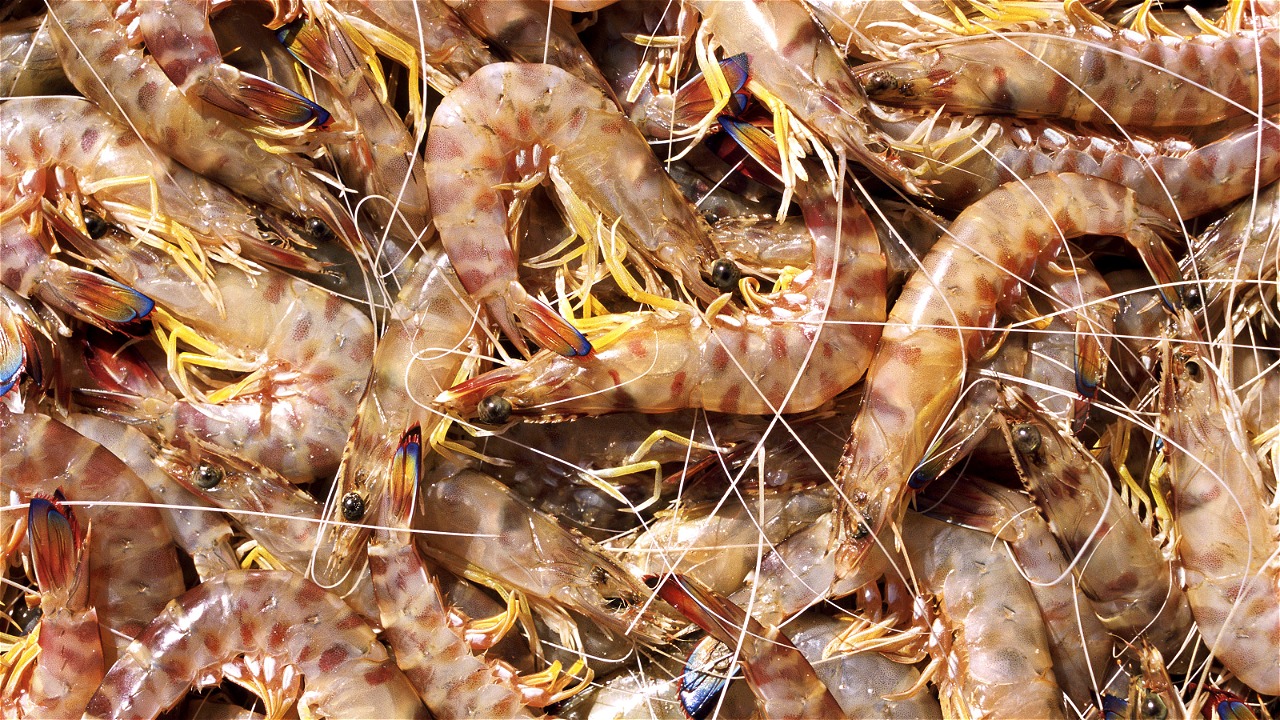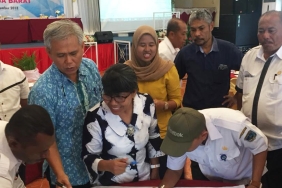FISHERMEN'S CATCH RECORDS REVEAL SHRIMP STOCKS IN CENTRAL JAVA ARE ALLEGEDLY 'FULLY EXPLOITED'
By: Buguh Tri Hardianto (Capture Fisheries Officer, WWWF-Indonesia)
"Not know, not sayang," is an apt saying in describing how we should manage fisheries resources. If we do not know the resources we have, many of us will not love them and tend to utilize them irresponsibly.
The best way for fishermen to get to know fisheries resources is to record their catch or logbook. According to KP Decree No. 48 of 2014, a fishing logbook is a skipper/fisherman's written daily report on fisheries activities and daily operations of a fishing vessel.
Recording of fisheries production is also intensified by PT Cassanatama Naturindo, a captured shrimp processing company in Central Java, together with its supplier fishermen. PT Cassanatama Naturindo is a member company of Seafood Savers, WWF-Indonesia's initiative to facilitate seafood businesses in sustainable fisheries resource utilization since 2009.
The logbook recording is independently conducted by PT Cassanatama Naturindo's shrimp suppliers, namely KUB. Manunggal Kasih, KUB. Sinar Bahari, and KUB. Bintang Samudera since February 2017. In addition to providing information for fishermen, the logbook data also serves as the basis for WWF-Indonesia's Fisheries Science team in estimating shrimp stocks in Pati and Demak.
By juxtaposing logbook data with fisheries production statistics of Central Java Province from the Central Bureau of Statistics (BPS) for 2011-2017, it was found that the status of shrimp stocks in Pati and Demak was in the category of fully exploited or full utilization.
"This means that shrimp stocks in these waters must be managed properly to keep their status from continuing to increase to over exploited or overutilization," said Oktavianto Prastyo Darmono, Fisheries Science Officer of WWF-Indonesia at the Dissemination of Fishermen's Logbook Analysis Results (18/09/2018) held by WWF-Indonesia with PT Cassanatama Naturindo.
This activity was carried out in two locations, namely in Morodemak, Demak Regency by KUB. Sinar Bahari and KUB. Bintang Samudera and in Banyutowo, Pati Regency by KUB. Manunggal Kasih.
The analysis showing the composition of catch, comparison of catch per fishing effort (CPUE), catch rate and income trend of fishermen will be analyzed in more depth by considering the fluctuation of shrimp fishing season of the fishermen comparing the operational cost with the catch per month.
This aims to determine the most effective and productive length of shrimp fishing operations. So that fishermen can get maximum profit later.
The fishermen were very enthusiastic in understanding the information provided in the dissemination of the results of this logbook analysis. Many inputs and questions were asked by fishermen during the discussion related to fluctuations in the fishing season and the length of fishing operations.
"We must also consider the fishing location, Mas, in calculating the effective length of fishing operations. Because the length of the trip to the fishing location is also different for each fisherman," said Setya Utomo, Chairman of KUB. Manunggal Kasih.
Next Steps to Save Central Java Shrimp Stocks
The results of the analysis of logbook data conducted and presented by WWF Indonesia's Fisheries Science team showed that logbook data is not only useful for basic shrimp resource management, but also analysis of fishermen's business and production.
Fish stocks are key to the sustainability of fishermen's livelihoods and the logbook is one of the centers of information. WWF will continue to deepen this analysis by involving other capable parties.
In the future, WWF-Indonesia and PT Cassanatama Naturindo will invite the Central Java Provincial Maritime and Fisheries Office, Diponegoro University, and researchers to jointly conduct a more in-depth study related to this shrimp stock.
In the first step, PT Cassanatama Naturindo is also committed to invest resources in enumeration activities to collect biological data, catch composition and historical catch for stock assessment needs. So that the study can be published and at the same time create an appropriate strategy as the basis for shrimp fisheries management in Demak and Pati.
The existence of logbook is very useful as basic data in management design and also determines the effectiveness of fishermen's business. The management of shrimp resource utilization not only ensures the preservation of nature, but also ensures the sustainability of the livelihood of fishermen, the business of seafood producers and also the sustainability of consumption of fishery products.





